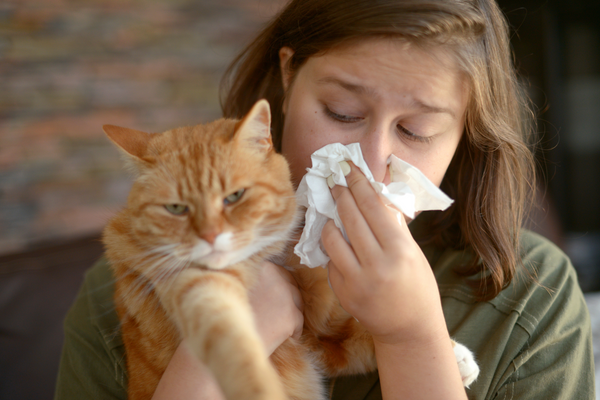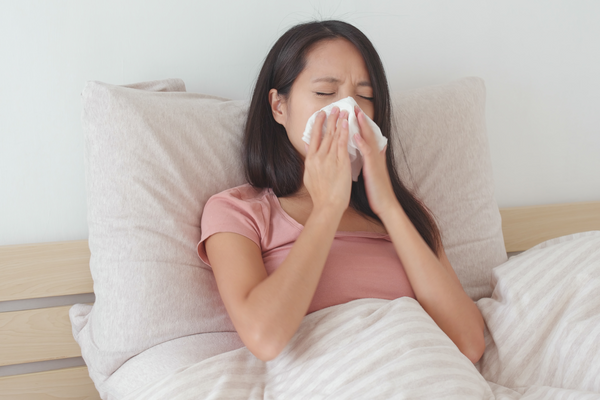Cleaning Hacks: 9 Ways to Use Vital Oxide (That You Haven't Tried Yet!)

We always knew we had something special in our premier disinfectant and all-purpose cleaning product, Vital Oxide. We just never imagined that we’d still be discovering new ways to use it years after creating it! From the kitchen to the bathroom, gardening to car care, in this article we’ll explore 9 more ways to clean with Vital Oxide.
Before we get to those, let’s talk about Vital Oxide’s superpowers! How does it work? Vital Oxide harnesses the power of oxygen – in the form of stabilized chlorine dioxide – for a powerful, effective, environmentally-friendly clean. Chlorine dioxide is a versatile disinfectant that was introduced to the U.S. in the 1940s to disinfect drinking water. And while it has chlorine in its name, it’s very different from chlorine bleach. Unlike bleach, which has a strong odor and forms trihalomethanes (THMs) when mixed with water, making it extremely corrosive, chlorine dioxide breaks down into water, oxygen, and common table salt, making it much less corrosive to surfaces and more versatile in a variety of application situations.
Vital Oxide is a multi use cleaner, EPA-registered disinfectant (approved for use against SARS-CoV-2, the coronavirus that causes the disease COVID-19), powerful odor and allergen eliminator, carpet sanitizer (awarded the Carpet and Rug Institute Seal of Approval), and mold and mildew remover. Vital Oxide has no added fragrances or dyes. It has no harsh chemicals, toxic residues or fumes, and earns the lowest toxicity level that the EPA gives for pesticide (disinfectant) applications – Category 4 – which means that you don’t need to wear a mask, gloves, or any other personal protection equipment while applying it for general use. You can even spray down your kitchen cutting board or other food prep surface to clean and sanitize without having to rinse. Vital Oxide is NSF certified D2 (No Rinse Required) as a food contact surface sanitizer, and kills 99.999% of bacteria, including common foodborne illnesses like E. coli and Salmonella. Vital Oxide can also be used to clean and deodorize your funky yoga mat, smelly sneakers, fido’s stinky squeaky toy, bad smelling baby gear, and more.
Without further ado, here are 9 more ways to use Vital Oxide that you might not have tried yet.

Remove Stubborn Mold & Mildew from Showers
Vital Oxide eliminates mold and mildew on a molecular level by penetrating and destroying tough mold and mildew at its source, with a residual effect on mold and mold spores for up to one month on fabrics and one week on hard surfaces with a single treatment.
Clean it:
- Spray shower walls and tub with hot water. Scrub with scrub brush or clean toothbrush to remove all visible mold and mildew. Rinse with hot water.
- Spray tub and grout lines liberally with Vital Oxide (full-strength, do not dilute for mold removal) from a distance of 12 inches until visibly wet.
- Allow to air dry.
Deep Clean Your Car
Vital Oxide is used by a number of automotive detailing companies across the globe, and for good reason! It’s versatile, gentle on surfaces, and effective against germs, grime, and gross odors (including lingering smells left over from smoke, food, and more).
Clean it:
For the interior:
- If you have dried-on dirt from spills or other mishaps, spray Vital Oxide onto any vinyl, plastic, or wood surfaces in your car that need cleaning.
- Allow grime to begin breaking down for a few minutes before wiping clean with a microfiber cloth.
- For carpets and microfiber seats, first thoroughly vacuum and then spray Vital Oxide directly from the bottle, or spray onto a clean microfiber cloth and wipe, and allow to dry naturally.
For the exterior:
- Fill a bucket with water and add ¼-½ cup of Vital Oxide along with your car wash soap of choice.
- Use a sponge or rag to clean and rinse with a hose.
- Dry with a chamois cloth or towel.
Bonus: Spot clean stubborn spots like bird droppings, bugs, tar, and tree sap with Vital Oxide. Simply spray, wait 30 seconds to help break down, scrub gently, and then rinse clean and dry.
Restore Your Blender
Has your love of green smoothies, plant-based milks, and homemade nut butters left your blender a little stained and scuzzy? Don’t fret!
Clean it:
- Wash with hot water and dish soap to remove any food residue.
- Spray liberally with Vital Oxide. Let sit for 10 minutes.
- Scrub any stubborn stains and rinse.
- Repeat as needed.
Help Your Garden Flourish
Have you been wondering why your green thumb isn’t working its normal magic? Are your plants mysteriously dying after repotting? It may be because your pots and planters are contaminated. By properly cleaning and disinfecting your flower pots and planters before you repot, you’ll help prevent the transfer of molds and diseases from old plants to new ones.
Clean it:
- Wash and rinse pots and planters with warm water and a fragrance-free dish soap, making sure to remove any dirt (use a scrub brush if needed).
- Spray liberally with Vital Oxide.
- Let air dry before planting.
Clean & Degerm Your Makeup Brushes
Did you know that big bad bacteria like Staphylococcus, Streptococcus, and E-coli are commonly found on makeup brushes? Yikes! When you don’t wash and sanitize your beauty tools, they will become happy breeding grounds for germs and even dust mites, too.
Clean it:
- First remove product buildup with unscented soap and warm water.
- Rinse well, and remove excess moisture with a clean paper towel.
- Reshape brush head and spray liberally with Vital Oxide.
- Let air dry to eradicate germs.
Deep Clean Your Piano Keys
Ever wonder about the best way to clean your piano keys? Look no further! First and foremost, avoid cleaners (both liquid and saturated wipe-type cleaners) that contain harsh ingredients such as alcohol (isopropyl), bleach, ethanol, or ammonia. These ingredients can contribute to discoloration and cracking. Instead, try this method:
Clean it:
- Spray Vital Oxide on a microfiber cloth. The cloth should only be slightly damp and cover an area the size of your fingertip.
- Start cleaning the keys from the lowest white note on your piano, and work your way up.
- Wipe dry with a clean microfiber cloth.
Make Windows & Stainless Steel Appliances Shine
Many cleaners can leave unsightly streaks on glass and stainless steel, which is definitely the last thing you’d want to see after spending all day cleaning!
Clean it:
- Spray Vital Oxide directly onto glass and stainless steel surfaces.
- Use a clean microfiber cloth to clean and shine. Be sure to move your hand back-and-forth in an “S” motion for optimal shine.
Remove Heavy Fragrance & Odors Out of Clothing
Buying used clothing and swapping hand-me-downs for kids are both awesome ways to help save the planet (and some cash). However, there is a downside to second-hand clothing: heavily scented laundry soap, lingering cigarette smoke smell, musty moth balls, heavy perfume, and pet dander. Here’s how to freshen up your new (used) wardrobe:
Clean it:
- Wash clothes with an Anti-Allergen Laundry Detergent, along with ½ to 1 cup Vital Oxide (depending on the size of the load) on a hot water setting. If your washing machine allows, add an extra rinse to the cycle.
- Sniff the clothes before drying. If the smell is still very noticeable, repeat washing. If it’s nearly gone, proceed to step 3.
- Let the dryer evaporate the rest of the scent, just be sure to keep windows open for good ventilation.
Sanitize Your CPAP Machine
It’s important that your Continuous Positive Airway Pressure (CPAP) machine is cared for in a proper way in order to protect yourself as well as your device. There are certain things that you will need to do in order to clean and care for your CPAP. Keep in mind that you use your CPAP for eight hours per night. Room air goes into the machine, filter, tube, mask, and nose. Then exhaled air goes back into the mask, tube, and machine. In that exhaled air is moisture from your body. Microorganisms thrive on moisture and particulate matter. For optimal hygiene, it's recommended that the equipment be cleaned and sanitized at least on a weekly basis (more often if you’ve been sick). Fortunately, cleaning and sanitizing your CPAP is a relatively simple process.
Clean it:
- Unplug your CPAP machine from its power source, and disassemble it.
- If you have one, remove the water chamber from the humidifier unit of the CPAP machine.
- Wipe the external surface of the machine with a damp cloth to remove dust and grime. Spray Vital Oxide on a clean microfiber cloth and wipe it onto the outside of the machine to sanitize.
- Wash the CPAP components (mask, headgear, tubing, and any connectors) as well as the humidifier water chamber with fragrance-free dish soap and warm water.
- To sanitize, spray CPAP components and humidifier water chamber with Vital Oxide and allow them to air dry before reassembling.




